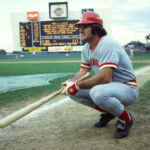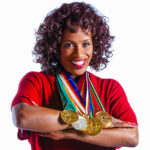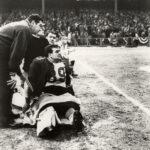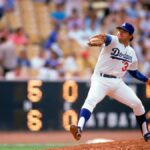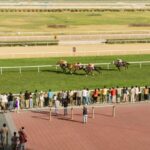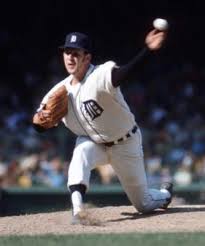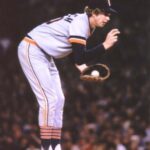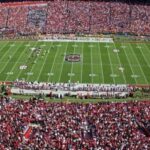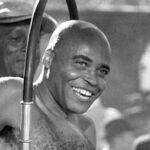The Evolution and Legacy of Randy Smith, Buffalo’s Brave

Buffalo: Home of the Braves captures the interesting history of professional basketball in Buffalo.
Note: Randy Smith, perhaps the least known NBA superstar, died unexpectedly recently, at age 60.
I believe nothing happens by accident. There is synergy in our actions and events beyond our understanding occurring all the time.
I believe it is not by accident that Tim and Chris Wendel’s book, Buffalo, Home of The Braves was released less than a week before one of its prime subjects, Randy Smith, saddened us all by leaving this world in the prime of his post-NBA life.
The Wendel brothers’ book is a gold mine of interviews with players and Hall-of-Fame coach Dr. Jack Ramsay. One of the key themes of the work is the unlikely ascent of Smith from local Division II basketball star to world-class All-Star MVP.
The book describes Smith’s unassuming beginnings:
At first glance, it was easy to underestimate Smith. Despite his athletic ability, he was so soft-spoken that his manner often bordered upon the laconic. Even though he was considered the greatest athlete in Buffalo State history, the school wasn’t a stop with many scouts. In fact, Smith won national honors for his soccer ability rather than his basketball play..During his senior year at Buffalo State, Smith didn’t show as well as in his junior year. Most of his scores came on drives to the basket, which most scouts didn’t think would happen with any regularity in either professional league—the NBA or the rival ABA…most scouts felt Smith lacked a dependable jump shot.
With knowledge of the scouts’ impressions of his play, Smith made it his mission to make adjustments right away. Refining his game would become a career-long obsession. His development is described:
So, in the weeks before the Braves’ training camp at Paul Snyder’s resort in Darien Lake, New York, Smith worked to develop more confidence in it [his jump shot]. He realized he was releasing the ball well after he jumped in the air—too often on the way back down the floor.
Before attending the Indiana Pacers’ rookie camp, one of the few invitations he received from the rival league, he reworked the mechanics of his shot. After that Smith started to let the ball go on the way up. Right away Smith saw his jumper had better arc and rotation.
Coach Ramsay was an invaluable mentor for Smith, a formative influence that may have been the key ingredient in Smith’s performance that without which Smith’s story might have been much different.
Ramsay became the Braves’ third coach in two years. At the outset, the Braves roster didn’t offer many weapons, but instantly the doctor recognized Smith’s potential.
Ramsay is quoted in the book recounting one of his favorite anecdotes that perfectly captures Randy’s ability:
‘We had an out-of-bounds play after an opposing team’s free throw where one of our big forwards, Garfield Heard, would take the ball out of the net. Randy would position himself near halfcourt, start back as if to receive the ball, foul line extended at that end of the floor.
‘When [Smith’s] man came [and] took one step, Randy would take off. Garfield would throw the ball. I’d say, ‘Garfield, you throw it and Randy will catch it.’ Randy would always catch up with the ball. Sometimes the ball would seem to be ahead of him, and he’d go an get it. He was an incredible athlete.’
Exploiting Smith’s athleticism was one of Coach Ramsay’s many key accomplishments in Buffalo. Ramsay, described as a “coach’s coach,” insisted that the right-handed Smith use only his left hand.
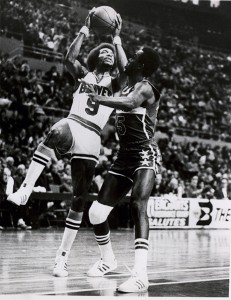
Randy Smith played in 906 consecutive NBA games.
“He gradually became skilled at using his left hand and became a more versatile player,” said Ramsay. The coach says Knick legend Walt Frazier once told him, “I hate playing against that guy.”
As Smith emerged as a pillar of an increasingly competitive Buffalo team, the time came when the normally self-deprecating lad actually begged Ramsay to let him run the break. From the book:
‘Randy wanted to handle the ball more, and I said, ‘No. [Braves point guard] Ernie DiGregorio handles the ball.’ Randy would come to me and say, ‘Coach, I can make the play!’
‘I said, ‘Randy, look, if you’re me, and you’re getting a fast break going…think of it this way: If we’re on the fast break, do you want Ernie DiGregorio on the wing, or Randy Smith?’ Smith said, ‘Well, I think Randy Smith.’
‘I said, ‘Right! Ernie can make the pass, and you can make the pass, too. But Ernie can’t finish on the fast break like you can.’ I would pump him up and say, ‘Nobody runs the fast break like you do.’ And Randy would say, ‘You’re right, coach.”
On the Wendels’ blog “Buffalo Nation”, they commented on Smith’s passing with these words:
Some players only see the world through a prism of their own statistics and accomplishments. Others have no choice but to be a part of team—to be a spokesman for something larger than themselves.
That’s how it was with Randy Smith…He was the spokesman for the old Buffalo Braves. He not only realized that but came to embrace that role.
John Howell is a regular contributor to Sports Then and Now.

